Let’s face it – seeking out the right information can be confusing whether you are a bodybuilder or just an average gym rat. Magazines, videos, online blogs, or even the biggest guys in your gym all provide different advice. That’s not to say any, or all, of that advice is ‘good’ or ‘bad’ but conflicting information will only lead to inconsistent gains in the gym. When it comes to training pecs especially, the difference between progress and wasting your time will be in understanding the fundamentals. This article was written, not to be the final word on chest training, but to clarify the essentials and, most importantly – to separate fact from fiction.
Pectoralis Major – What You Need To Know
The Pecs we’re concerned about when building a massive chest is the Pectoralis Major muscle. This fan-shaped muscle attaches from your sternum, the medial third of your clavicle and the cartilage of your ribs, to the greater tubercle of your humerus. In short, its fibers horizontally adduct your arm (bring your arm cross your body) and internally rotate (turn in) your arm. The upper fibers of the Pectoralis Major also have the ability to flex your arm (forward) in the sagittal plane.
The Pectoralis Major is composed of between 57-68% fast-twitch (type IIa & IIb) fibers and will vary depending on the individual. If your goal is strength and hypertrophy, this is good news! As you may already know, Type II fibers adapt far better to moderate to high loads, with moderate to high rest periods, as well as grow far more readily than their slow-twitch counterparts. Loading your Pecs, therefore, should include this type of loading for the vast majority of your chest work.
Control – The Key to Exercise Execution
Whenever implementing a brand new movement or exercise strategy, such as the ones being introduced in this very article, a crucial factor will be patience with execution. Any new movement or skill should be carried out in a slow, progressive manner. This may mean a slower tempo, lighter weight and even a trained-eye to monitor your performance, these would be the most ideal. Like perfecting any skill in any sport or martial art, slow and light should be practiced before faster and heavier, without sacrificing quality. This is essential to obtaining theresults you desire. Even changing from barbell to dumbbells, dumbbells to cables, a change in shoulder position or a slight incline from flat can dramatically alter your muscles’ coordination and function. “Practicing” control in every degree of motion and keeping it is probably the most underused fundamental of bodybuilding – and it can make or break your progress!
Range of Motion (ROM) – How much Is Optimal?
One of the biggest inconsistencies with chest training is just how much ROM someone should utilize during any exercise. The answer to optimal range is not a simple one considering every exercise, including its variations, have their very own mechanics as it applies to every individual. Choosing the appropriate ROM is one of the principal factors in assessing both risk and benefit of a particular exercise. Obviously, when dealing with the shoulder joint and performing chest movements, one would want to minimize risk and enhance benefit. Unfortunately, the so-called ‘exercise rules’ that you often hear in the gym such as ‘always bring the bar to your chest’ or ‘try to get a full-stretch at the bottom’ neither enhance benefit, nor decrease risk. There is a better way.
Although nothing can replace a skilled exercise professional in identifying the appropriate ROM for any given exercise, one can obtain a degree of awareness by checking the available active ROM of their antagonist muscles (in the case of chest: pulling backwards). For example, the active ROM for a Barbell Bench Press can be found by doing the following: Standing straight and still using a broomstick (mimicking a barbell), gently pull the broomstick towards the chest (slowly imitating exactly your path in a Bench Press) without changing posture or moving any other joints. Where the broomstick ends up relative to your chest will be representation of your approximate available active ROM during a Barbell Bench Press. Staying within the active limits of any chest exercise will be the key to optimal pec activation and decreasing the activity of your front deltoids.
The active ROM self-check is not a simple task and absolute care should be given. This method, however, can be used as a guideline to identify the ‘stopping point’ at the lengthened end of any chest exercise: inclines, declines, flyes, and machines. If you determine your active ROM is far less than the ‘full’ range you may have been following in the past, chances are you will find an astonishing increase in the workload of your pecs while staying within your active limits. If you are one who is cursed with a narrow rib cage and long arms, this method can bethe greatest equalizer for ultimate chest development!
Shoulder Positioning
The position of your shoulder relative to the load can dramatically alter the sensation of any chest exercise. This can beof particular significance to those who have compromised shoulder joints and perhaps at increased risk of injury.
Pecs are best worked in the transverse plane (shoulders abducted at 90%, elbows positioned in line with shoulder) due to the direction of their fibers, but many individuals can avoid potential discomfort and even impingement if the shoulders are depressed and the elbows slightly below the line of the shoulder.
Advanced lifters, meaning those who exhibit control consistently, can also manipulate their scapula motion during their pressing or flye movements. When performing chest/shoulder exercises (presses or flyes) the scapula moves naturally by protracting and retracting during the concentric and eccentric phases, respectively. Because this scapular motion influences muscular contribution in chest exercises, it is critical to be aware of the positioning of your scapulaewhile performing these actions.
Those in particular who lack rib-cage depth can manipulate their scapula to their advantage by keeping it retracted during their chest exercises. This will help overcome potential bad mechanics by improving the pec’s mechanical ability on the humerus anddramatically increasing its angle of pull. Although this technique can be extremely helpful, caution should be used as to not overuse ‘artificial’ scapular motion: always progress by steadily increasing the number of sets or the load while emphasizing retraction. In general, it’s never a good idea to perform the majority of your sets without natural rhythm between your scapula and humerus to minimize joint wear and overall risk. Those who have a ‘thicker’ rib-cage inherently, have a better angle of pull with their pecs and need not emphasize scapular retraction to such a degree.
Another consideration for shoulder positionwill be rotation of the humerus. When inflat/decline pressing positions, internal rotation of the glenohumeral (GH) joint is a certainty. However, during variations of dumbbell/machine/cable flye motions, they offer the choice of rotating out at the GH joint. While your arm is internally rotated, the upper pecs maintaina considerable degree of participation, as the arm is rotated outwards, many more upper pec fibers lose their ability to contract against the resistance.
Breathing
 Another factor that can be manipulated to overcome shortcomings in pec mechanics, due to a lack of rib-cage thickness, is breathing during each rep. A common mistake while performing chest exercises is exhaling far too dramatically during the concentric phase of the repetition. We are all told to breathe in on the way down and out on the way up. Exhaling too much before the end of the concentric phase of the lift can decrease pec angle significantly as the rib-cage collapses. Focusing on more shallow breathing can be a critical tool to maintaining a more consistent foundation for optimal pec involvement. Heavy, low repetition sets, while keeping the rib-cage ‘fuller’ with emphasis on inspiration or holding in your breath, can prevent the front deltoids from taking over the workload.
Another factor that can be manipulated to overcome shortcomings in pec mechanics, due to a lack of rib-cage thickness, is breathing during each rep. A common mistake while performing chest exercises is exhaling far too dramatically during the concentric phase of the repetition. We are all told to breathe in on the way down and out on the way up. Exhaling too much before the end of the concentric phase of the lift can decrease pec angle significantly as the rib-cage collapses. Focusing on more shallow breathing can be a critical tool to maintaining a more consistent foundation for optimal pec involvement. Heavy, low repetition sets, while keeping the rib-cage ‘fuller’ with emphasis on inspiration or holding in your breath, can prevent the front deltoids from taking over the workload.
Inner/Outer Pecs
One mistake during exercise selection is the belief that certain movements can emphasize inner or outer pecs. This misguided notion was perpetuated due to the fact that some exercises can give the ‘feeling’ that certain fibers are under more stress than others. The most rational explanation for this phenomenon is that many exercises, even those that look almost identical on the surface, offer variable resistance profiles. For example, most chest flye machines offer far more resistance near the end of the shortened part of the range, versus lying dumbbell flyes, which are far heavier during the lengthened (or ‘bottom’) part of the ROM. This can lead to a much different muscular sensation based on where most of the resistance is located relative the shortened or more lengthened-end of the ROM. In truth, because inner and outer pec fibers run parallel to each other, it is a mechanical impossibility to separate the function of one fiber on the inside to another on the outside.
Inclines vs. Declines
Of significant importance to training pecs, is ensuring variations of resistance by changing the plane of the load relative to your shoulder joint. This is most commonly accomplished by inclining or declining a bench, or changing the line of the resistance, usually using cables, in standing or seated variations. The most important consideration while choosing inclines and declines is that while inclines offer slightly more upper pec involvement, they can sacrifice far lower pec. Because the majority of pec fibers align horizontally across, depending on rib-cage depth and shape, a flat press or slight decline offers significant involvement of the upper pec without sacrificing any lower pec. Keeping this mechanical reality in mind, it is still imperative to create several variations of angles using inclines and declines, however, they should be utilized to spread joint wear and offer slightly different motor recruitment and stimulation. In short, the more you incline- the more front delts get recruited relative to pecs and the fewer lower pec fibers are activated. Try not to emphasize inclines too much, or incline too high too frequently, if you wish to develop your pecs to their fullest potential!
Strategically Selecting Chest Exercises
When choosing exercises for your workout program, understanding the factors outlined above will be essential. We all know that variation of exercises and workouts is a must for consistent development. Instead of selecting exercises arbitrarily or because ‘they are just different’, you should now be able to better comprehend each exercise and strategically use them to your advantage.
One aspect not yet explained adequately might be the most important for variation: Resistance profile, or where the resistance is heavy vs. where it is light. Awareness of resistance is a tool that can significantly enhance your gains in the gym.
While most trainees are worried about ‘full range of motion’, the reality is that the vast majority of chest exercises offer a far different resistance during each part of the motion. For example, a dumbbell bench press offers more resistance at the bottom (or lengthened end) of the ROM and zero resistance at the top (or shortened end) of the ROM above the shoulders. Contrast this to a cable crossover while standing centered between a wide-cable setup: zero resistance at the lengthened end of the ROM and far more resistance during the shortened end. Ultimately, there are infinite variations that lie in between these two examples that can be used effectively.
Here are some common examples of poor exercise selection and mistakes with execution:
Dips: the traditional dip exercise is essentially an extreme decline where the arms are forced in the sagittal plane (at the side, far away from the transverse plane) and the pec fibers are not well in line to do much work. The shoulder joint capsule is stressed at the bottom of the motion more often than not, mostly due to over-extending beyond its active ROM while being the heaviest portion of the range of motion.
Try this instead – Decline Cable Presses: using a steep decline bench (20-45 degree angle) facing a narrow cable tower, align the cables so that your elbows are in-line with the cable at about 30-45 degrees of abduction at your shoulders (will vary with individuals). This path of motion and resistance profile significantly decreases risk on your GH joint and involves far more pec activity than its dip counterpart.
Cable Crossover/Flye: far too many people will attempt create inclines but set the cables to low and are standing too far in front of the cables to adequately stimulate the pecs. Other errors include not stabilizing the trunk or hips enough, protracting the shoulders too early or too much and not lining up the path of the arm with the plane of the cable.
Try this instead – standing perpendicular to the ground (straight up and down) with staggered feet, setting the height of the cables not too far below the height of your shoulder and following the path of motion in-line with the direction of the cables (think about a windshield wiper staying on a windshield). Your hands should end up below your shoulders at the beginning of the movement and above your shoulders at the completion of the concentric phase. Always make sure that your trunk is adequately stabilized using the muscles of your trunk, plus make certain no motion takes place at other joints, especially at your neck. You can create resistance variations based on how far in front of the cables you stand, or howhigh/low the cables are relative to your shoulders.
Dumbbell Flyes: although there is nothing ‘wrong’ with free-weight exercises in general, chest exercises using free weights all share very similar resistance profiles. One example on the extreme end would be dumbbell flyes and their variations. Because the resistance is non-existent at the shortened end of the ROM (at the top) and so high when the pecs are at their longest length (where they are weakest), acceptable execution of this exercise in not only difficult and risky on your joints, but also redundant if free-weights comprise the rest of your chest program.
Try this instead – a seated chest flye machine or its standing cable counterpart. You may also use seated ‘cable presses’ with a narrow cable tower at various angles and distances as a means of providing a changing resistance through the ROM.
___
Some of the other common mistakes seen in the gym often involve several combinations of what was outlined earlier:
- lack of control
- moving too fast (while not yet establishing control)
- using too much or too little ROM
- protracting the scapula too early or too much (not able to consciously control the scapula)
- paying no attention to breathing
- flexing the cervical spine (lifting your head up off the bench)
- using too much incline or too many incline variations to stimulate the pecs optimally
- failing to strategically select exercises based on where the resistance is in the ROM.
- Whenever you are looking to change your chest routine, use these fundamentals as a guide to ever increasing gains in the gym. Always be weary of those who preached complex, ‘advanced’ techniques, promising results that always end up being totally unrealistic. Those who practice patience, strategize and take care to execute correctly are those who ultimately thrive!
“Success is neither magical nor mysterious. Success is the natural consequence of consistently applying the basic fundamentals.” – Jim Rohn

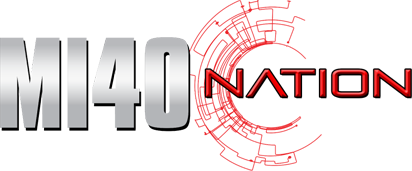
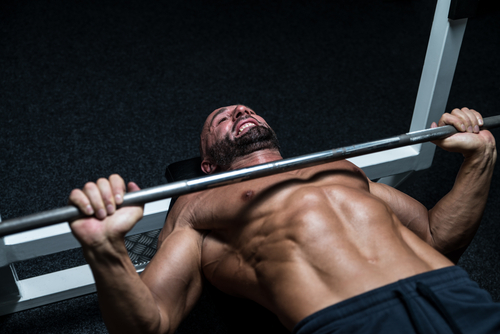

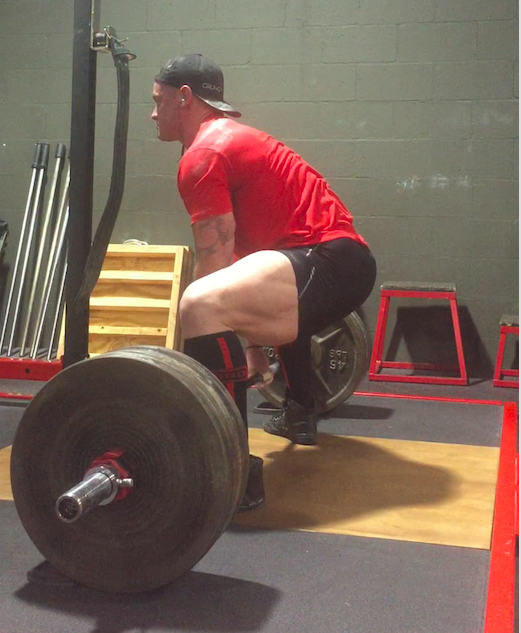

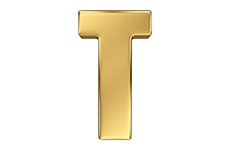

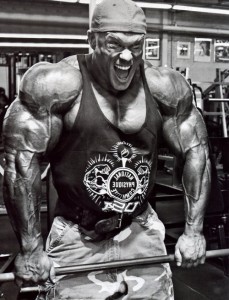
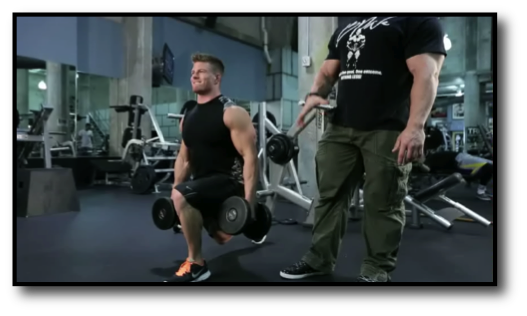

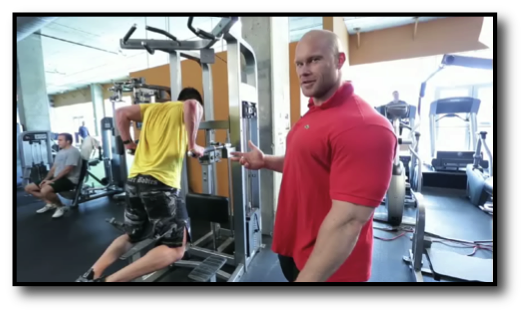
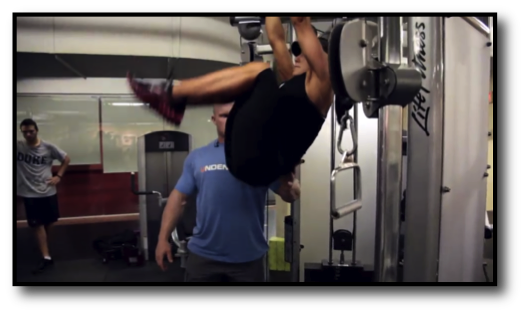

 Another factor that can be manipulated to overcome shortcomings in pec mechanics, due to a lack of rib-cage thickness, is breathing during each rep. A common mistake while performing chest exercises is exhaling far too dramatically during the concentric phase of the repetition. We are all told to breathe in on the way down and out on the way up. Exhaling too much before the end of the concentric phase of the lift can decrease pec angle significantly as the rib-cage collapses. Focusing on more shallow breathing can be a critical tool to maintaining a more consistent foundation for optimal pec involvement. Heavy, low repetition sets, while keeping the rib-cage ‘fuller’ with emphasis on inspiration or holding in your breath, can prevent the front deltoids from taking over the workload.
Another factor that can be manipulated to overcome shortcomings in pec mechanics, due to a lack of rib-cage thickness, is breathing during each rep. A common mistake while performing chest exercises is exhaling far too dramatically during the concentric phase of the repetition. We are all told to breathe in on the way down and out on the way up. Exhaling too much before the end of the concentric phase of the lift can decrease pec angle significantly as the rib-cage collapses. Focusing on more shallow breathing can be a critical tool to maintaining a more consistent foundation for optimal pec involvement. Heavy, low repetition sets, while keeping the rib-cage ‘fuller’ with emphasis on inspiration or holding in your breath, can prevent the front deltoids from taking over the workload.

